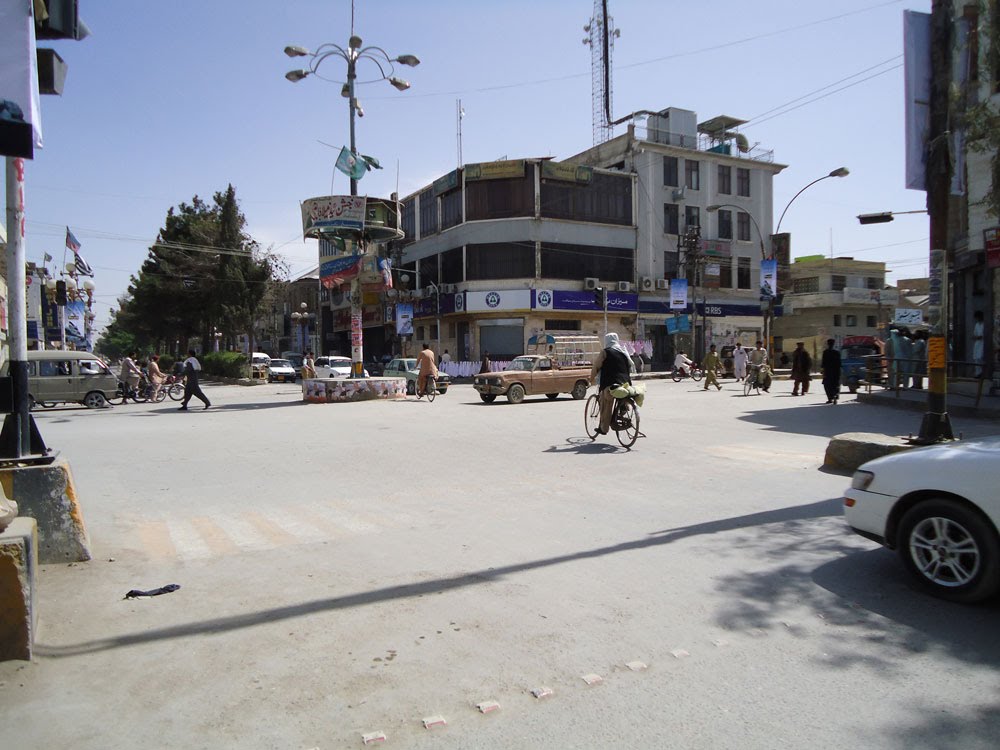QUETTA: Once the restaurants and shops at either side of Mohammad Ali Jinnah Road used to be the preferred hangout of the elite class of Quetta city in the 1950s and ’60s.
The distinctive place used to be crowded with well-known social and political families as it used to be a status symbol.
The road was originally named after Lieutenant Colonel Charles Edward Bruce (1876-1950), a British Indian military officer of the colonial period who was the city administrator then and also served as the chief commissioner of Balochistan in 1920. The road was named then as Bruce Road. But after the creation of Pakistan in 1947, the road was named as Mohammad Ali Jinnah or M.A. Jinnah Road.
There were also a number of Iranian cafes like Dawn, Firdowsi, Regal, Farah and some others where people from different political parties and notables particularly the sardars and nawabs used to have discussions on the political situation of the country as well as the region. The main shops and cafes were located between Regal Chowk and the then Kandahari Bazaar which is now the Shahrah-e-Iqbal crossing (also known as Manan Chowk).
Read more: Scarcity and abundance
Although now M.A. Jinnah Road starts from the where the famous Café China is located and stretches up till the railway station, the actual stretch of the road used to be between Café China and the Kandahari Bazaar crossing. There were often gatherings between these points and the political workers used to attend the gatherings to have an idea of the general views which they eventually shared with their party leaders.
Literary, political hub
There were also many bookshops at either side of M.A. Jinnah Road which used to be the favoured spots of the literary people and book lovers.
A number of tribal and political elites regularly bought local and international publications from these shops.
Abdus Samad Khan Achakzai, the founder of the Pashtoonkhwa Milli Awami Party, was often seen sitting on the steps of the well-known Karim Studio surrounded by political activists belonging to different ethnic groups where he used to have tea in traditional cups over discussions about martial law. The political workers used to be glued to the discussions with their leaders that usually went on for hours and sometimes till dusk. Besides the political leaders and activists, also the general public of Quetta who had a habit of hoteling used to come here to socialize.
Similarly, Nawab Akbar Bugti and Nawab Khair Bakhsh Marri along with their friends also used to visit the Quetta Medical Hall for discussions on political issues and tribal matters. Later on, Nawab Bugti decided to hold such discussions at his residence located at Ainuddin Street.
Nawab Saifullah Magsi used to chair the discussions, relating to his circle, at his place. No armed guards of the tribal chieftains were seen during the meetings then. The general public exchanged pleasantries with the chieftains and leaders while sharing their problems with them.
Moreover, elites used to shop from facilities located at M.A. Jinnah Road. Among the famous shops were the Haji Fatah Khan shop that provided a variety of cosmetics, garments and other goods of daily usage. However, the shop was well known for its Pakistan Day celebrations and the announcements — accompanied by drumbeats — of the moon sightings for Eidul Fitr and Eidul Azha.
Read more: Gwadar rising
A controversial aspect of the announcements was that there were many incidents of differences between the actual dates for the religious celebrations as some locals used to follow the Fatah Khan announced dates rather than the official announcement of the government and the civil administration.
Café China that was run by a Chinese family was another place at the famous M.A. Jinnah Road for social gatherings and the preferred dine-out spot of the elite. Now the restaurant has been shifted to the cantonment area.
Then and now
If a comparison between the Bruce Road of yesteryear is done with today’s M.A. Jinnah Road, a vast difference could be noticed as most of the shops and restaurants have been converted into commercial banks, offices of cellular phone companies, franchises, shoe shops etc.
The vehicles with tinted glasses escorted by armed guards are now seen plying on the road as the trend of carrying armed guards has taken over.
Unknown people introducing themselves as tribal leaders roam around with armed guards. The old locals nowadays complain of not finding the people-friendly leaders and elders, particularly after the Afghan war.
Now, M.A. Jinnah Road — once preferred for evening walks and gossip — has become so congested that one can hardly find parking space for their vehicle. People avoid visiting the iconic road. Currently, most of the shops are owned by Afghans or migrants from the interior of the province. Earlier, it was considered as the main point for shopping, but now a number of shopping plazas and malls are the preferred points of the general public.



















